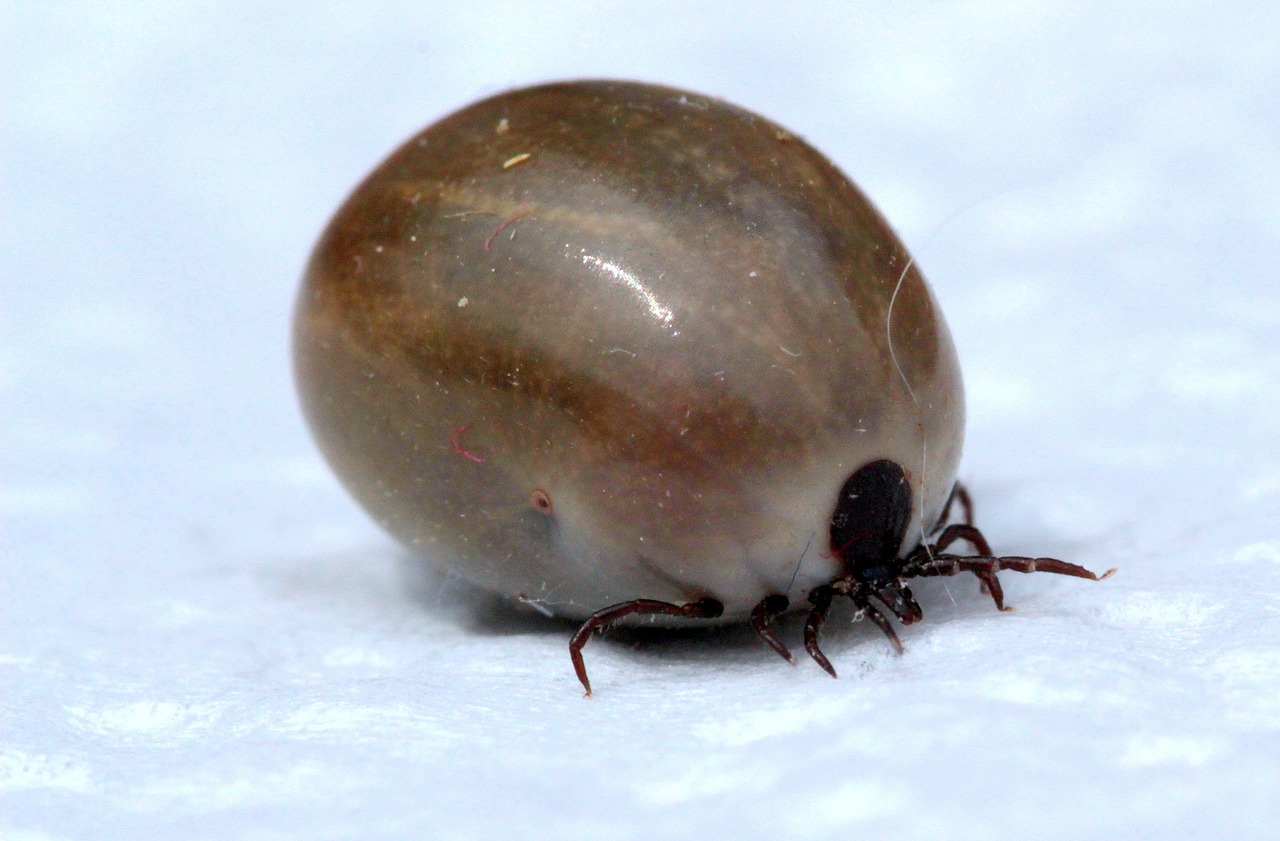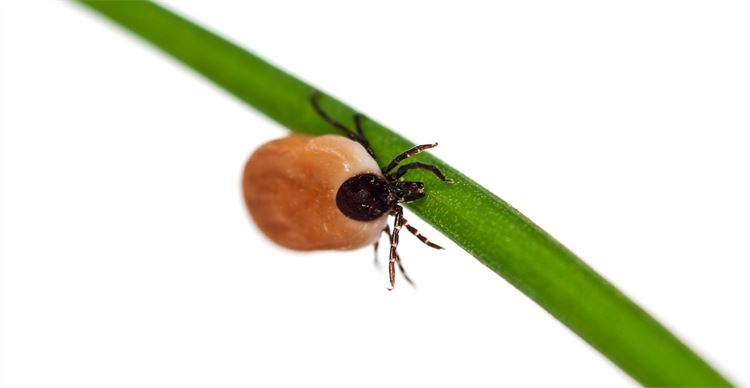Protecting your dog from tick bites caused by fleas should be a priority, and there are lots of ways you can practise flea and tick prevention, explains veterinary nurse Laura Hawkins.
Tick Bites On The Rise
Tick numbers are rising across the UK due to changing climates and habitats, along with an increasing number of hosts, which raises the risk of a higher number of tick bites for dogs.
Ticks are blood-sucking parasites that belong to the spider family. Ticks come only behind mosquitoes in the disease transmission stakes, spreading infectious disease to humans and animals, and from one mammalian host to another.
There are three types commonly found in the UK:
- Ixodes ricinus (the sheep/deer tick)
- Ixodes hexagonus (the hedgehog tick)
- Ixodes canisuga (the British dog or fox tick)

Ticks can live for up to three years. Tick bites occur when they feed on the blood of a single host in each of their life stages: as larvae, nymphs and adults. While living on their host, ticks will also find a mate with which they will reproduce.
The places we walk, work, or train our dogs - heather, bracken, grassland, woodland - are generally prime habitat for ticks, making these potential tick bite hotspots. However, with vigilance and care, there’s much we can do to minimise the associated risks.

What Are The Risks Of Tick Bites For Dogs?
Dog tick bites carry the risk of transmission of a wide variety of diseases that can be found in a tick’s saliva.
Lyme Disease
Lyme disease is one of the most common conditions transmitted via tick bites, potentially causing long-term illness to both dogs and humans. Lyme disease is caused by infection with a bacteria called Borrelia burgdorferi.
Tick bite symptoms that may signal Lyme disease include:
- Fever
- Loss of appetite
- Fatigue
- Lameness
- Swelling of joints
- Swelling of lymph nodes
- Swelling of glands
Bear in mind that the characteristic rash associated with Lyme disease that’s often observed around the site of a tick bite in human cases, is generally not seen in dogs.

I have seen a case of Lyme disease caused by tick bites in practice: a healthy seven-year-old dog that picked up a tick that was successfully removed by the owner. However, 18 months later, the same dog was diagnosed with Lyme disease.
The dog was presented to the surgery with symptoms roughly 3 months after the tick was removed, initially with just very slight lameness, walking as if the floor was hot. At 8 months post tick removal, she was showing signs similar to those we’d see with meningitis - stiffness in her shoulders and neck, and irritation under bright lights.
Many tests were run before diagnosis, including MRI scans, and it took three strong courses of antibiotics to finally clear the disease.
Babesiosis
Babesiosis is another condition associated with tick bites, and there have now been three reported cases of the disease - previously only found abroad - in the UK.
Babesiosis is fatal to dogs, and it can be fatal to humans too - there is currently no vaccine available against.
Tick bite symptoms that may signal the onset of babesiosis may include:
- Lethargy
- Pale gums
- Jaundice
- Red or brown urine
- Fever
Flea And Tick Prevention For Dogs
Preventing tick bites and the risk of conditions like Lyme disease and babesiosis is crucial, so flea and tick prevention needs to be a priority for all dog owners. These are some ways you can practise flea and tick prevention for your pet:
- Check your dog’s fur and skin regularly, and always try to remove a tick on dog skin within 24 hours. Studies have shown that a tick will only release its saliva into its host at the second stage of feeding, which begins after 24 hours
- You can get products that will kill ticks within 24 hours, preventing the likelihood of tick bites occurring
- You can also purchase products that will repel ticks, helping to protect dogs in the rare event of a tick becoming attached after spending time on another host and therefore potentially nearing the stage at which it is ready to release saliva
- Use spot-on treatments, such as sprays and collars that are designed to impregnate the fatty layer of a dog’s skin. This can act as a repellent or is consumed by any feeding ticks that are killed shortly thereafter
What To Do If You Find A Tick On Your Dog

It’s important to regularly check your dog to help you to spot any abnormalities as quickly as possible. When you’re looking for ticks on dogs’ skin and fur, bear in mind that ‘unfed’ ticks are very small and far less noticeable than those that have been attached for a while and have blood-swollen abdomens.
If you do find a tick on your dog, it’s vital that it’s removed correctly to reduce the risk of tick bites. However, early removal is only helpful if done properly, and the tick remains intact without releasing the saliva that carries disease.
How To Remove A Tick From Your Dog
You can remove a tick from your dog by using a tick hook. Tick hooks are small devices that fit under the body of the tick and are used in a twisting motion to ensure both the head and legs of the parasite are removed intact with the body to prevent tick bites.
A tick should never just be pulled off, burnt or ‘suffocated’ using a substance such as Vaseline, as this can cause further problems; when ticks become stressed, they will release saliva, which is exactly what we’re trying to avoid.
If the tick’s body is pulled away with the head left in the dog, saliva will be released, and the head can cause infection, irritation, and potentially lead to an abscess.
At the end of the day, there’s no fail-safe way of protecting our dogs from tick bites, but we can - through flea and tick prevention, and precautionary measures - give our faithful friends the best chance possible.

If you’re concerned your dog may be experiencing tick bite symptoms, you should always contact your vet as soon as possible to get the support your dog needs.
If you have any questions about flea and tick prevention, please contact us here.